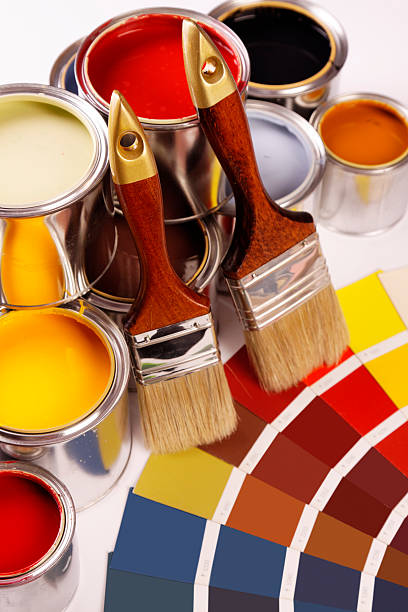As a professional painter, choosing the right paint brush for different surfaces is crucial for achieving the desired result. Each surface requires a specific type of brush that can effectively apply the paint and create the desired texture.
Using a larger brush with synthetic bristles for walls or ceilings. These brushes can hold more paint and quickly cover a larger area. A 3-inch brush would be ideal for painting larger surfaces.
On the other hand, for smaller surfaces or detailed work, a smaller brush with natural bristles would be more suitable. These brushes have finer tips, which can help with precision and detailing. A 1-inch brush would be perfect for this type of work.
When painting wood, using a paint brush with natural bristles is the best, as they are better suited for oil-based paint. A 2-inch brush would be ideal for painting wood surfaces.
Brushes with synthetic bristles would be the best option for metal surfaces, such as railings or doors. These brushes are more durable and can withstand the harsh conditions of metal surfaces. A 2-inch brush would be suitable for painting metal surfaces.
However, choosing the right paintbrush for different surfaces may be difficult if you’re new. Knowing where to start cannot be easy with so many types of brushes and surfaces. In this article, we will talk about the different types of paint brushes and the surfaces they are best suited for.
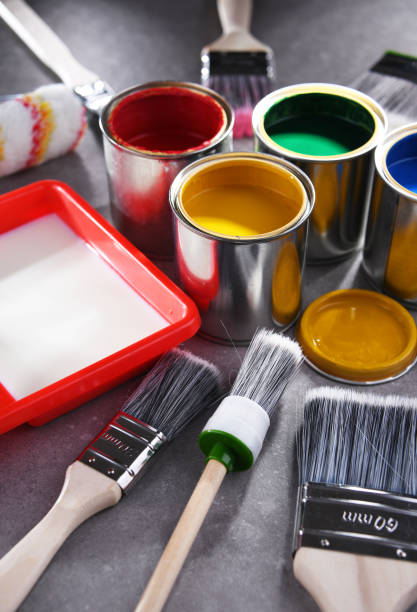
Types of Paint Brushes
Before we talk about the different surfaces, we need to take a look at the different types of paint brushes:
Flat Brushes:
Flat brushes are wide and flat, ideal for painting large surfaces. They are great for quickly covering a lot of space and are available in various sizes.
Round Brushes:
Round brushes have a pointed tip and create fine lines and details. They are ideal for painting curves and circles and are available in various sizes.
Angle Brushes:
Angle brushes have slanted tips and are great for painting corners and edges. They are also helpful for creating fine lines and details and are available in various sizes.
Fan Brushes:
Fan brushes have a flat, fan-shaped tip and are great for creating texture and blending colours. Available in various sizes.
Filbert Brushes:
Filbert brushes have a flat, oval-shaped tip that is great for creating soft edges and blending colours. They are ideal for painting curves and available in various sizes.
Paint Different Surfaces
Now we know the different types of brushes, let’s look at the different surfaces they are best suited for.
Walls:
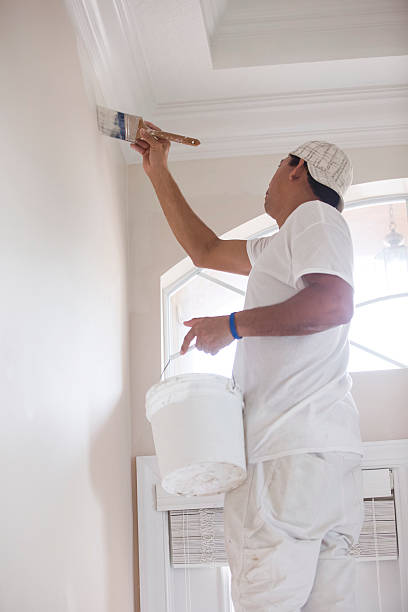
When you are going to paint walls, you’d better choose a large flat brush, such as a 3 inches paint brush or 4 inches paint brush, which will help you to quickly cover a lot of space and achieve a smooth, even finish. You can also use a roller for larger areas and a smaller brush to cut around edges and corners.
Trim and Baseboards:
When painting trim and baseboards, using a smaller angled brush, such as a 1-inch or 2-inch brush, is best. The angled shape will allow you to quickly get into corners and edges and achieve a clean finish.
Furniture:
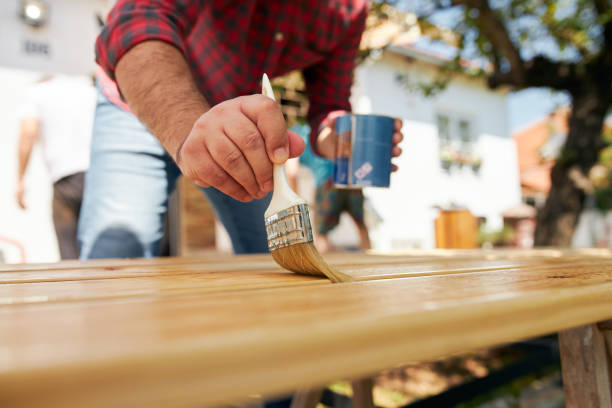
When painting furniture, you will need to choose a paint brush and know which size and shape for which purpose; well. A big-size flat brush or roller will work well for larger pieces, while a smaller paint brush, such as a round or filbert brush, which will be more suitable for more minor details.
Doors:
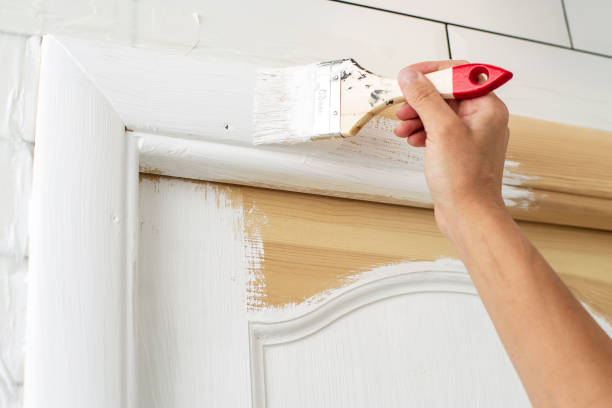
When painting doors, you’d better choose a larger flat brush like 3 inches or 4 inches or a roller for the larger areas, and a smaller brush, such as an angled brush, you can use for the edges and corners. This will help you achieve a smooth finish while getting into tight spaces.
Ceilings:
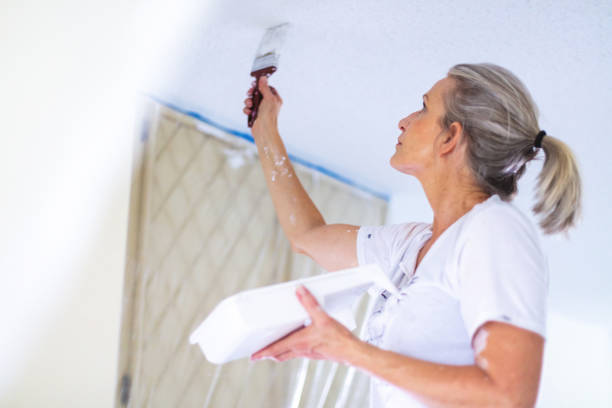
When painting ceilings, it’s best to use a large flat brush or roller when painting ceilings. A long-handled roller will allow you to reach high areas easily and achieve a smooth, even finish. You can also use a smaller brush to cut around edges and corners.
Choosing the right paint brush for different surfaces is important. You can achieve a professional-looking finish. By understanding the different types of paint brushes and the surfaces which are best suited for you, you can ensure that your painting project goes smoothly and the result looks great.
In addition, take good care of your brushes so they can last as long as possible. After each use, clean your brushes thoroughly with warm water and mild soap and reshape the bristles with your fingers. Avoid using hot water, as this can damage the bristles, and never leave your brushes soaking in water for long periods. After cleaning, store your brushes with the bristles facing up or hang them by their handles to prevent the bristles from becoming misshapen.
In conclusion, using paint brushes for different surfaces requires careful consideration of several factors, including brush size and shape, bristle type, and paint type and finish.
Remember the importance of proper technique when using paint brushes for different surfaces.
How to Use Paintbrushes
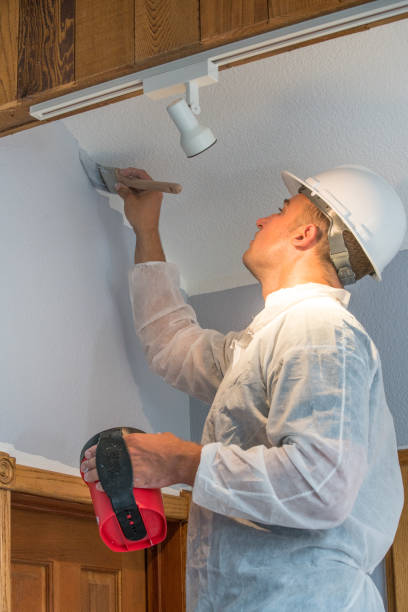
A few tips
Dip the brush into the paint, only about 1/3 up the bristles. This will help prevent excess paint from dripping off the brush and ensure the bristles maintain shape.
Use light, even pressure, when applying the paint. Too much pressure can cause the bristles to splay out and create an uneven finish.
Start with the edges and corners, using a smaller brush to get into tight spaces. Once you finished the work
of the edges and corners, you need to use a larger brush or roller to cover the rest of the surface.
Use long, smooth strokes when painting. Short, choppy strokes can create an uneven finish and cause brush marks to appear.
You can achieve a professional-looking finish on any surface by following these tips and practising good technique.
Safety is the final point when using paint brushes for different surfaces. While painting may seem simple, it can pose several risks if proper safety precautions are not taken.
You must keep the paint and brushes away from open flames or heat sources, as some paints are flammable.
Dispose of used paint and brushes properly, following all local regulations and guidelines.
If you experience any adverse reactions, such as dizziness or difficulty breathing, stop painting immediately and seek medical attention.
These safety tips can help prevent accidents and ensure your painting project goes smoothly.
In conclusion, using paint brushes for different surfaces requires careful consideration of several factors, including brush size and shape, bristle type, paint type and finish, technique, and safety. By taking the time to choose the right brush for the job, using proper technique, and following safety guidelines, you can achieve a beautiful, professional-looking
